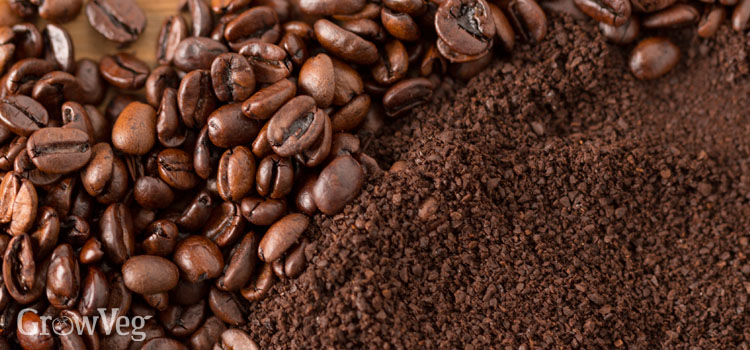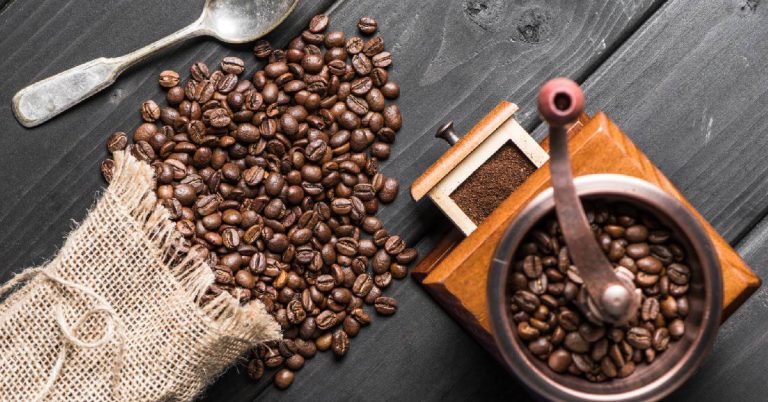Is It Coffee Grounds Or Coffee Grinds?
Coffee grounds and coffee grinds are the same thing. Coffee grounds are the remnants of brewed coffee.
We will explore the meaning of coffee grounds or coffee grinds and their various uses in gardening, cooking, and skincare, debunking any possible confusion between the two terms. While enjoying a cup of coffee, you may have wondered what happens to the coffee residue left behind.
Coffee grounds, also known as coffee grinds, refer to the leftover coffee particles after brewing. These grounds or grinds can be used in numerous ways, such as fertilizing plants, enhancing flavors in cooking and baking, and even creating diy skincare products. In this comprehensive guide, we will delve into the world of coffee grounds or coffee grinds, exploring their versatility and environmentally friendly applications. Discover the potential of this beloved beverage’s by-product and how it can be repurposed in various aspects of your daily life. So let’s dive in!

Credit: www.growveg.com
What Are Coffee Grounds?
Coffee grounds refer to the leftover residue from brewing coffee. These grounds are essentially the used coffee beans that have been extracted during the brewing process. Coffee grounds are formed when water passes through the ground coffee beans, releasing the flavors and oils.
This process leaves behind the spent coffee grounds, which are commonly discarded or composted. Throughout history, coffee grounds have played a significant role as a byproduct of coffee consumption. From traditional brewing methods to modern coffee makers, coffee grounds have remained a constant presence.
Today, innovative ways to utilize coffee grounds are becoming increasingly popular, such as turning them into fertilizer or using them for skincare. Thus, coffee grounds are more than just waste; they can serve a variety of purposes beyond the cup of coffee they originated from.
Coffee Grounds Vs Coffee Grinds: Is There A Difference?
Coffee grounds and coffee grinds are often used interchangeably, but is there really a difference? The terms “grounds” and “grinds” both refer to the used coffee that remains after brewing. While some people use the word “grounds” to describe the coffee residue, others prefer the term “grinds”.
The usage of these terms can vary depending on regional preferences or personal choice. Interestingly, the origin and evolution of these terms are not entirely clear. It is speculated that “grounds” might have come from the idea of coffee being leftover from the brewing process, while “grinds” might have originated from the act of grinding coffee beans.
Regardless of the terminology used, both “grounds” and “grinds” ultimately refer to the same byproduct of brewed coffee.
Common Uses Of Coffee Grounds
Coffee grounds, or coffee grinds, have a range of common uses. In gardening, they can be used as fertilizer, enriching soil with nutrients. They can also serve as excellent compost material. When it comes to skincare and beauty treatments, coffee grounds can be used as an exfoliant, removing dead skin cells and leaving a smooth complexion.
They can even help reduce the appearance of cellulite. Another practical use is for cleaning and deodorizing. Coffee grounds can absorb odors in the refrigerator or act as a natural scrub for dirty pots and pans. Lastly, coffee grounds can add flavor and texture to cooking and baking.
They can be used as a spice rub or added to cookie dough for a unique twist. With so many versatile uses, coffee grounds have more to offer than just a great cup of joe.
Coffee Grounds In Gardening
Coffee grounds can be a valuable addition to your gardening routine. Many types of plants benefit from their use. They act as a natural fertilizer, providing essential nutrients like nitrogen, potassium, and magnesium. Coffee grounds also improve soil structure and drainage, making it easier for plants to grow.
To use coffee grounds effectively, it’s important to follow some best practices. First, make sure to let the grounds dry out completely before using them. Then, sprinkle the coffee grounds around the base of your plants, avoiding direct contact with the stems or foliage.
It’s also a good idea to mix the grounds into the soil to ensure proper distribution of nutrients. Coffee grounds can be a sustainable and eco-friendly way to enhance your gardening efforts.
Coffee Grounds In Skincare And Beauty
Coffee grounds have become increasingly popular in skincare and beauty routines. Many people are turning to homemade coffee scrubs and masks to exfoliate and rejuvenate their skin. The benefits of coffee grounds in skincare are vast. They can help to stimulate blood circulation, reduce the appearance of cellulite, and exfoliate dead skin cells.
Coffee grounds are also known for their antioxidant properties, which can help to protect the skin from free radicals and promote a youthful complexion. Additionally, coffee grounds can be used for hair treatments as well. They can help to stimulate hair growth, remove build-up, and add shine to the hair.
With so many benefits, it’s no wonder coffee grounds are becoming a staple in beauty routines.
Cleaning And Deodorizing With Coffee Grounds
Coffee grounds can be used as a natural odor absorber, making them ideal for cleaning and deodorizing. They work wonders for absorbing unpleasant smells in various areas of the home. When it comes to cleaning kitchen utensils and surfaces, coffee grounds can be a fantastic tool.
Their coarse texture helps to scrub away dirt and grime effectively. They can also be mixed with warm water and used as a diy air freshener that adds a delightful coffee aroma to the surroundings. With their eco-friendly and non-toxic nature, coffee grounds provide a great alternative to chemical-filled cleaning products.
So, the next time you brew a fresh cup of coffee, don’t throw away the grounds! Instead, utilize them for cleaning and enjoy the fresh, invigorating scent they bring to your home.
Culinary Uses Of Coffee Grounds
Coffee grounds can be used in various culinary applications, both savory and sweet. Incorporating them into recipes can enhance the flavor profile of dishes. From savory meals like marinades and rubs to desserts like cakes and cookies, coffee grounds add a rich and unique taste.
In drinks, coffee grounds can be used to infuse flavor in beverages like cold brews or cocktails. Their distinctive aroma and taste can elevate the experience of sipping on a refreshing drink. So, next time you have leftover coffee grounds, don’t just throw them away.
Explore the culinary potential they hold and experiment with incorporating them into your recipes for a delightful and flavorful twist.
Sustainability And Recycling Coffee Grounds
Coffee grounds and coffee grinds are often used interchangeably, but what’s the correct term? When it comes to sustainability and recycling, it’s essential to understand the environmental impact of coffee grounds waste. Instead of discarding them, there are solutions available for recycling coffee grounds in an eco-friendly way.
From composting to using them as natural fertilizers, coffee grounds have innovative uses that benefit both our gardens and the environment. These recycled coffee grounds can also be repurposed for skincare products, odor absorbers, and even as a material for creating sustainable furniture.
By finding creative ways to recycle coffee grounds, we can contribute to a more sustainable future while reducing waste. So, next time you brew a cup of coffee, think twice before tossing those grounds in the trash.
Frequently Asked Questions Of Is It Coffee Grounds Or Coffee Grinds
What Are Coffee Grounds?
Coffee grounds are the leftover particles after brewing coffee, commonly used in composting and gardening.
What Are Coffee Grinds Made Of?
Coffee grinds consist of finely ground coffee beans, which are used to brew fresh and aromatic coffee.
Can You Reuse Coffee Grounds?
Yes, you can reuse coffee grounds by repurposing them in various ways, such as making body scrubs or cleaning solutions.
How Long Can You Keep Coffee Grounds?
Coffee grounds can be kept fresh for up to two weeks when stored properly in an airtight container.
Conclusion
To sum up, understanding the difference between coffee grounds and coffee grinds is essential for any coffee enthusiast. While they are often used interchangeably, coffee grounds typically refer to the used coffee beans after brewing, while coffee grinds refer to the process of grinding coffee beans to make the grounds.
It’s important to note that the quality and consistency of your coffee grind can greatly affect the taste of your brew, leading to a more enjoyable cup of joe. Whether you prefer a coarse grind for french press or a fine grind for espresso, experimenting with different grind sizes can open up a world of flavor possibilities.

